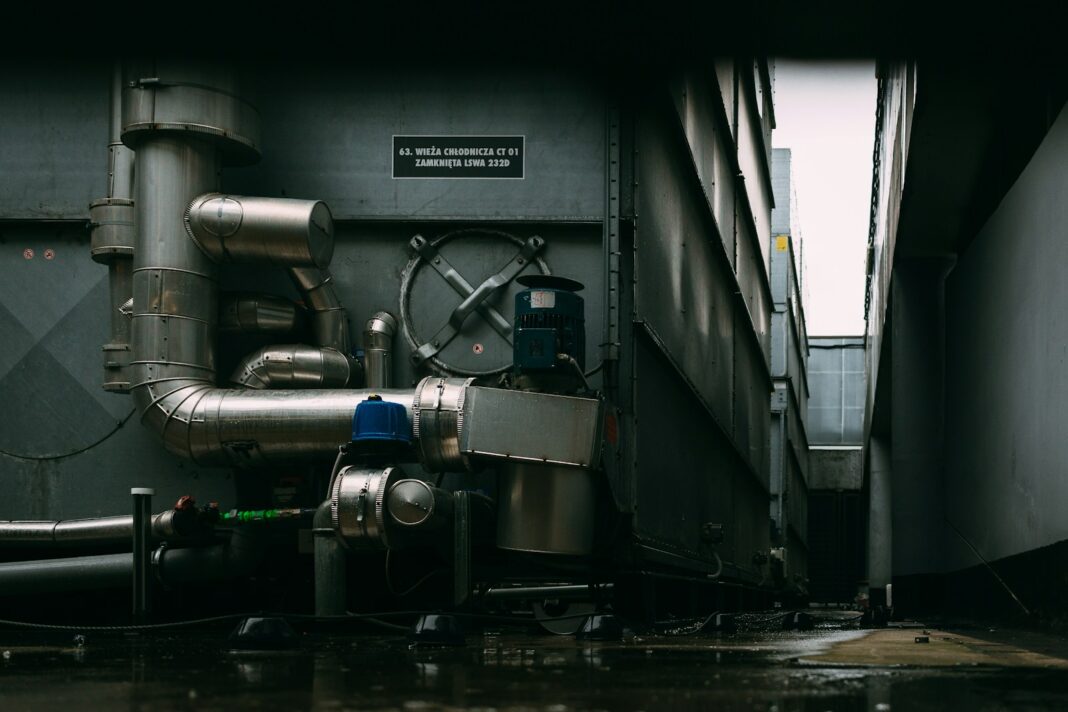Introduction
When it’s time to replace your furnace, the first question that typically comes to mind is: “How Much Is a New Furnace?” While the answer may vary depending on numerous factors, understanding the different types of furnaces, installation fees, and long-term expenses can help you make an informed decision. This article will guide you through the costs associated with purchasing a new furnace, explain what factors influence the price, and help you assess the right furnace for your home and budget.
Types of Furnaces and Their Costs
Furnaces come in a variety of types, each with different features, efficiencies, and price points. The type of furnace you choose will significantly impact the overall cost of installation and long-term operation. Let’s explore the main furnace options available on the market today.
Gas Furnaces
Gas furnaces are one of the most common heating options in homes, especially in regions where natural gas is readily available. They operate by burning natural gas to heat the air and are known for their efficiency and reliability.
Cost Range: The cost of a gas furnace typically ranges from $2,000 to $5,000, including installation. High-efficiency models, which can have an AFUE (Annual Fuel Utilization Efficiency) rating of 90% or more, will be on the higher end of this range.
Pros:
- Lower operating costs due to affordable natural gas.
- Efficient heating for large homes.
Cons:
- Requires a gas line, which can add to the installation cost if one is not present.
- Periodic maintenance is needed for safety and performance.
Electric Furnaces
Electric furnaces use electricity to heat air, which is then circulated through your home. These furnaces tend to be cheaper upfront but can have higher operating costs, especially in areas where electricity prices are high.
Cost Range: On average, the cost of an electric furnace is between $1,500 and $3,500, including installation.
Pros:
- Lower upfront cost compared to gas furnaces.
- Easier to install and maintain.
Cons:
- Higher electricity costs can make them expensive to operate in the long run.
- Less efficient in colder climates compared to gas models.
Oil Furnaces
Oil furnaces are typically used in areas where natural gas is not available. They burn heating oil to produce heat and tend to have higher fuel costs than gas furnaces but are an option for homes without gas service.
Cost Range: The price of an oil furnace, including installation, generally falls between $2,500 and $6,000.
Pros:
- Can be a viable option for homes without gas lines.
- Provides efficient heat in colder climates.
Cons:
- Oil must be stored in a tank, which requires additional space.
- Heating oil is generally more expensive and less environmentally friendly than natural gas.
Propane Furnaces
Propane furnaces are similar to gas furnaces but use propane as their fuel source. They are a good alternative in rural or off-grid areas where natural gas is not accessible.
Cost Range: A propane furnace can cost between $2,500 and $5,500, including installation.
Pros:
- Efficient for heating large spaces.
- Propane is readily available in areas without gas infrastructure.
Cons:
- Propane fuel is more expensive than natural gas.
- Requires a propane storage tank, which adds to installation complexity.
Factors Affecting Furnace Costs
When determining the cost of a new furnace, it’s essential to consider several factors that can influence the overall price. These include the size of your home, the efficiency rating of the furnace, and installation fees.
Furnace Size
The size of the furnace, measured in BTUs (British Thermal Units), should match the heating needs of your home. A furnace that is too small will struggle to heat your home efficiently, while one that is too large may cycle on and off frequently, wasting energy. The size you need will depend on the square footage of your home, insulation quality, and climate.
Cost Impact: Larger furnaces with higher BTU ratings tend to be more expensive. On average, you can expect to pay an additional $500 to $1,000 for a larger furnace compared to a smaller model.
Efficiency Rating (AFUE)
The AFUE rating measures how efficiently a furnace converts fuel into heat. Furnaces with higher AFUE ratings are more efficient, meaning they use less fuel to generate the same amount of heat. While high-efficiency furnaces tend to cost more upfront, they offer long-term savings through lower utility bills.
Cost Impact: A furnace with an AFUE rating of 80% to 85% may cost between $2,000 and $3,500, whereas a high-efficiency furnace with a rating of 90% to 98% can range from $3,500 to $6,000.
Installation Fees
The cost of installing a furnace varies based on the complexity of the job, the type of furnace, and your home’s layout. For example, installing a gas furnace may require modifications to your ductwork or the addition of a gas line, both of which will increase the cost.
Cost Impact: Installation costs typically range from $1,000 to $2,500, depending on the factors mentioned above.
Location and Climate
Where you live also plays a role in the cost of a new furnace. In colder climates, you may require a more powerful and efficient furnace to keep your home comfortable. Additionally, installation costs tend to be higher in regions with a higher cost of living.
Cost Impact: Expect to pay a premium in regions with colder climates or higher labor costs, potentially adding $500 to $1,500 to the overall price.
Additional Costs
There are several additional costs to consider when purchasing a new furnace. These can include permits, inspections, and other services that may be required depending on local building codes.
Common Additional Costs:
- Ductwork modifications: $500 to $2,000.
- Thermostat upgrade: $100 to $500.
- Permit fees: $100 to $300, depending on local requirements.
Comparing Furnace Brands
The brand of furnace you choose can also affect the cost. Well-known and reputable brands tend to offer more reliable products but may come at a higher price point. Here’s a brief overview of some popular furnace brands and their average costs.
Carrier
Carrier furnaces are known for their high efficiency and advanced technology. They offer models with AFUE ratings of up to 98.5%, making them one of the most energy-efficient options on the market.
Cost Range: $3,000 to $6,000, including installation.
Lennox
Lennox is another top-tier furnace brand offering both standard and high-efficiency models. Their furnaces are often more expensive but come with advanced features like variable-speed blowers and precise temperature control.
Cost Range: $3,500 to $7,500, including installation.
Trane
Trane furnaces are known for their durability and reliable performance, with models ranging from 80% to 97% AFUE. They also offer quieter operation than many competitors.
Cost Range: $2,800 to $6,500, including installation.
Goodman
Goodman furnaces provide a more affordable option without sacrificing quality. While they may not offer as many high-end features, they are known for being a budget-friendly choice with solid performance.
Cost Range: $2,000 to $4,000, including installation.
How to Choose the Right Furnace for Your Home
Selecting the right furnace is about more than just price—it’s essential to consider the size, efficiency, and type of furnace that will best suit your home and needs. Here are some steps to help you make an informed decision.
Assess Your Heating Needs
Start by evaluating your home’s heating requirements. A professional HVAC technician can help determine the appropriate furnace size based on factors like your home’s square footage, insulation, and climate.
Consider Efficiency
While high-efficiency furnaces may cost more upfront, they offer significant savings over time through lower utility bills. If you plan to stay in your home for several years, investing in a more efficient model can be a wise financial decision.
Factor in Maintenance Costs
All furnaces require regular maintenance to keep them running efficiently. Be sure to factor in ongoing maintenance costs, such as annual inspections and filter replacements, when calculating the total cost of your furnace.
Get Multiple Quotes
It’s a good idea to get quotes from several HVAC companies before making a decision. This will give you a better understanding of the installation costs in your area and help ensure you’re getting a fair price.
Frequently Asked Questions (FAQs)
1. What is the average lifespan of a furnace?
The average lifespan of a furnace is about 15 to 20 years, although regular maintenance can extend its life.
2. Are high-efficiency furnaces worth the extra cost?
High-efficiency furnaces can be worth the extra cost, especially in colder climates or if you plan to stay in your home long-term, as they reduce energy bills.
3. How often should I have my furnace serviced?
Furnaces should be serviced at least once a year, ideally before the heating season begins, to ensure they run efficiently and safely.
4. What are some signs that my furnace needs to be replaced?
Common signs include increased energy bills, uneven heating, strange noises, frequent repairs, and the furnace being over 15 years old.
5. Can I install a furnace myself to save money?
Installing a furnace is a complex job that should be done by a licensed HVAC professional. Improper installation can lead to safety hazards and inefficient operation.
6. How long does it take to install a new furnace?
The installation of a new furnace typically takes one to two days, depending on the complexity of the job.
Conclusion
The cost of a new furnace can vary widely depending on the type, size, efficiency, and brand you choose. By understanding the factors that affect furnace prices and comparing your options, you can find a system that fits both your heating needs and your budget. Don’t forget to consider the long-term savings that can come from investing in a high-efficiency furnace, as well as the importance of proper installation and maintenance to keep your system running smoothly for years to come.












